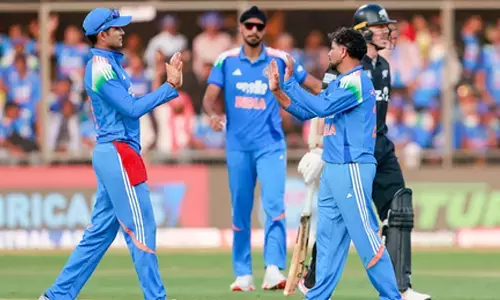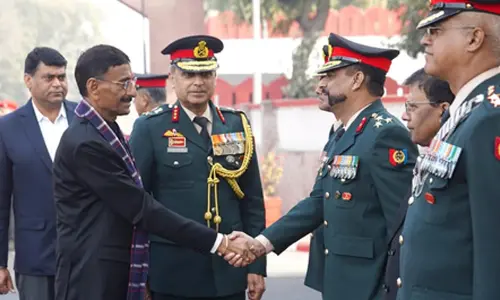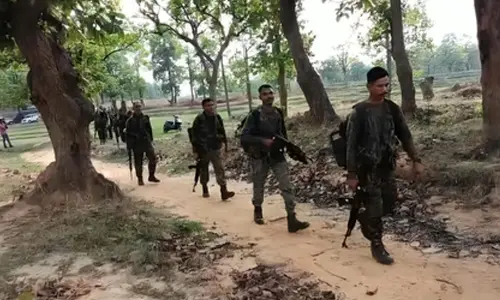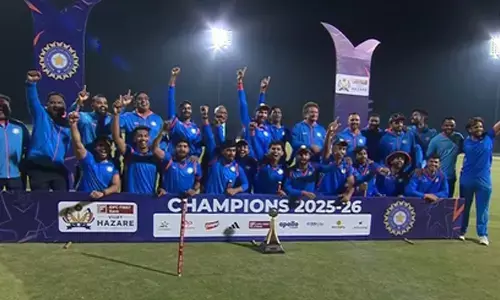The Screen Goddess

The Screen Goddess, Gollapudi Maruti Rao, Anjali Devi. I was nine years old when I sat on the lap of my mother and saw a movie at Minerva Talkies on the shores of Bay of Bengal at Visakhapatnam.
I was nine years old when I sat on the lap of my mother and saw a movie at Minerva Talkies on the shores of Bay of Bengal at Visakhapatnam. The theatre is now defunct. Three popular stars performed in the movie- Akkineni Nageswara Rao, S Varalakshmi and Anjali Devi. I had the unique fortune of sharing the screen space with them in later years. Exactly after 14 years, I started my career as screen writer in Akkineni’s film company Annapoorna Pictures. I not only wrote several films for him but acted along with him as also with his son Nagarjuna.
S Varalakshmi was 11 years elder to me. I recall at least four films in which we acted as man and wife! One film ‘Srivaru’ starts with a shot in which she commands me to stand on a pedestal and touches my feet as she chose not to bend to pay respects to her husband! And Anjali Devi was 12 years elder to me. We acted as sister and brother in two films- ‘Sankellu’ and ‘Poratam’. I was a villain in yet another film ’Manavude Mahaneeyudu’. She did the main lead along with Akkineni in ‘Melukolupu’ (1956) of the famous director L V Prasad in the fifties and graduated herself to do the character roles in late nineties and for which I did the story to the later film ‘Manavude Mahaneeyudu’. Very interestingly she did vamp roles during her early days. ‘Palleturi Pilla’ was her first film to do the lead role as heroine. But for cine-goers like us she was the ever-quintessential personification of serene screen presence. Kannamba lent dignity to her roles. Srirajani oozed melodrama. Anjali was known for serenity. And Savitri did not belong to any particular genre. She can adopt herself to any characterisation at will.
Anjali was barely ten years old when her relative Nookayya brought her to Adinarayana Rao of Young Men’s Happy Club, Kakinada to introduce her to theatre. He was twelve years elder to her. He used to take her on his bicycle making her sit on the front to the rehearsals.
The stalwarts like Gandikota Joginatham, Relangi and S V Rangarao were some of the few artistes of the club who made waves in their respective disciplines in the coming years. In 1939 Anajali acted in her first play ‘Kuchela’. Later she paired with S V Rangarao in a play called ‘Street Singers’. Eventually she insisted on marrying Adinarayana Rao who was her friend, philosopher and guide though he was already married.
In early Nineties G Rajendra Prasad of Madhavi Pictures had chosen to produce a film with P Samabasivarao as its director. They convinced the then veteran director K S Prakash Rao, who acted fifty years earlier in the film ‘Drohi’, to don a character. He reluctantly agreed. Who will be his wife? They chose Anjali Devi. It was then they cast me as her brother. That was ‘Sankellu’. Later I did Sakhamuri Ramachandra Rao’s ‘Poratam’ and Cherukuri Prakasarao’s ‘Manavude Mahaneeyudu’. In all these films Anjali Devi enacted character roles. She had the genius of giving an epic status to her films and her portrayals carry an eerie and effervescence, be it Suvarna Sundari or films like Anarkali. In all her films she was the producer under the banner Chinni Films, named after her son and Anjali Pictures. Her husband, a veteran music director in his own right always matched his genius with melodious music.
Invariably the psychic import of the individual artiste reflects on the portrayals of his or her roles on the screen and vice versa. An interesting and glaring instance comes to mind. When we visited the United States for some stage shows years back, the NRIs were shocked to find J V Somayajulu, whom they know only as Sankara Sastry in that memorable masterpiece ‘Sankarabharanam’ smoking all the time. They could not reconcile to the realistic image of the actor with his screen image.
The audiences very often cannot become objective to the portrayals of particularly successful images perpetuated by artistes in epic proportions. They become infallible and idolised. There was a great example. The actor, who did the role of Jesus in the film ‘The Bible’, it was said, refused to act in any other role anytime in his career after the film. He walked into oblivion nonchalantly. Anjali Devi never broke that cordon of the ‘screen goddess’ image - be it a suffering mother or an aspiring wife or a docile protagonist - and her image never suffered a dent in all these decades after her epic role of “Seetha’’ in Lavakusa.
I had a rare, but unique experience. I wrote a movie for my good friend Jagadeesh Chandra Prasad, son-in-law of Dukkipati Madhusudana Rao. S V Ranagarao did the character lead. But he died soon after the first schedule. We were in panic. Who can replace the veteran artiste? We could not find one. There was somebody who could answer the requisites of the character - Anjali Devi. We changed the character into a woman and she did the role with aplomb and ease. Its name was ‘Challani Talli’, meaning an endearing mother. She kept that epithet all her life with her genius and importantly her discretion. That makes her image immortal and lasting.















